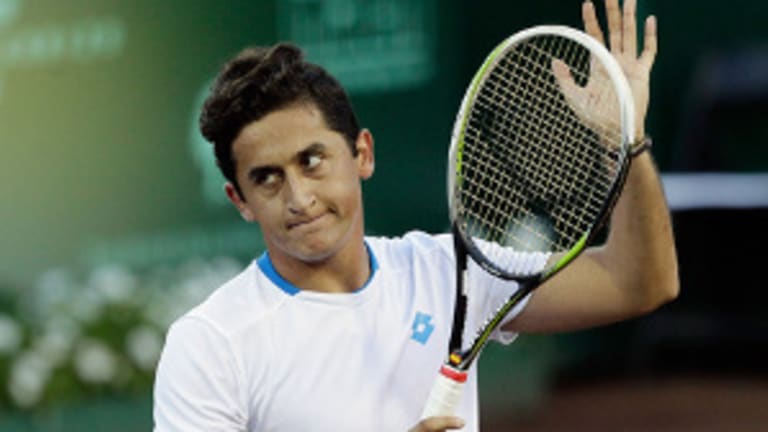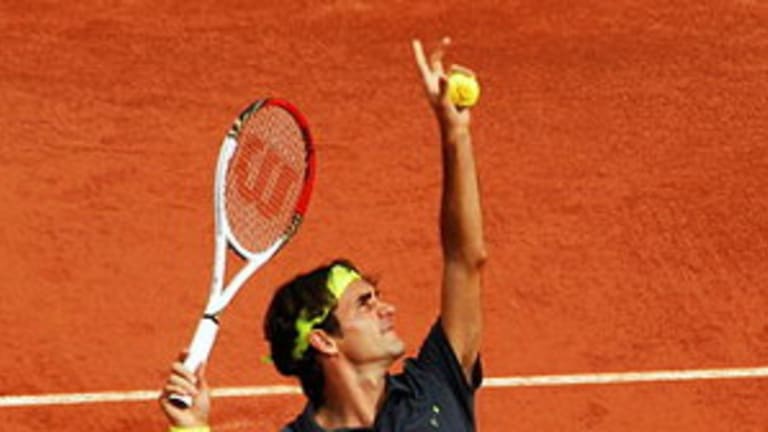Houston; defending champion John Isner: The world No. 9 and top seed went the way of Anderson, a victim of Germany’s Dustin Brown (in a final-set tiebreaker, go figure) in his opening match. The men to watch as this one unfolds are a pair of Spaniards who still have some good tread on the tires, Nicolas Almagro and Fernando Verdasco.
Monte Carlo; defending champ Novak Djokovic: Federer, perhaps in a giddy fit after he won a decisive fifth rubber in Davis Cup, has jumped into the fray with a wild card. But as great as Federer is, it seems likely he’ll end up collateral damage as Nadal tries to avenge his loss to Djokovic in last year’s final—a match that ended Rafa’s mind-boggling string of eight consecutive Monte Carlo titles. It was also the only loss on Nadal’s otherwise perfect spring record in 2013, which includes his title run at Roland Garros.
Despite Nadal’s persuasive history, Djokovic will have good reason to feel confident he can repeat as champion. He likes the venue, and Nadal will certainly be thinking—wincing, all the while—about their last meeting. Djokovic crushed Nadal in the Miami Masters final at the beginning of this month. Sure, that was on hard courts, but don’t for a moment think that Nadal takes much comfort from that.
Barcelona; defending champion Rafael Nadal: Sure, it’s just an ATP 500, but Nadal doesn’t give a hoot about that. It’s on red clay, it’s in his native Spain, and it gives him another opportunity to beat the stuffing about of David Ferrer, or Almagro (Barcelona doesn’t fit into the plans of Federer, Djokovic, Murray, or Stanislas Wawrinka). You have to wonder, doesn’t Rafa ever tire of it? The answer: No.
The tournament will have a solid field, though, with the likes of returning finalist Almagro, Ferrer, Tomas Berdych, Richard Gasquet, Marin Cilic, Fabio Fognini, and hard-charging Alexandr Dolgopolov.
Bucharest; defending champion Lukas Rosol: Even Nadal can’t win a tournament he didn’t play, but did the winner have to be the guy who ruined Rafa’s 2012 Wimbledon? Enjoy your schadenfreude while you can, folks; you won’t get many more chances in this space.
Bucharest is a mere ATP 250, but it generally attracts a good field and this year is no exception: Committed players include Simon, Monfils, Mikhail Youzhny, and Florian Mayer. Rosol has his work cut out if he hopes to repeat.
Oeiras; defending champ Stanislas Wawrinka: Wawrinka’s drive to his current, lofty position as world No. 3 and the game’s newest Grand Slam champ began here last year. It was his first tournament win since January 2011 (in Chennai), and immediately after winning this ATP 250, Wawrinka made the final in Madrid. (Losing to—SPOILER ALERT!—Nadal.) He was off and running.
There’s no reason Wawrinka shouldn’t win in Portugal again. The likely No. 2 seed will be world No. 12 Milos Raonic, after which is No. 20 Dmitry Tursunov, who’s not exactly famous for his clay-court prowess.
Munich; defending champion Tommy Haas: Sadly, the amazing Mr. Haas isn’t expected to defend the title he won in the city of his birth. The 36-year old ironman has been off the tour with a shoulder injury since he lost at Indian Wells. That leaves German hopes to Mayer, Philipp Kohlschreiber, and Alexander Zverev. Munich’s own will have their work cut out, though, as the international field includes Monfils, Fognini, Andreas Seppi, and Lleyton Hewitt.
Madrid; defending champion Rafael Nadal: This Masters 1000 is the tournament where most fans began to take Wawrinka seriously, even though Nadal made short work of him in the final, 6-2, 6-4. But comparatively speaking, Nadal has struggled at this tournament, even after it became an outdoor clay event in 2009. He’s won it “only” three times—the same number of wins that Federer has logged.
Now that the tournament is back on blue clay after a brief, terrible experiment last year with the red stuff . . . Gotcha.
Seriously though, the slippery, fast blue clay of 2012 has been banished forever, but this is still the clay-court tournament where aggressive players are likely to do best because of the way the ball flies at Madrid’s altitude. That’s welcome news to Djokovic, Federer, and the likes of Berdych and Jo-Wilfried Tsonga. But we could also see a breakout here by Grigor Dimitrov (who beat Djokovic here last year), Ernests Gulbis, or even Raonic.

